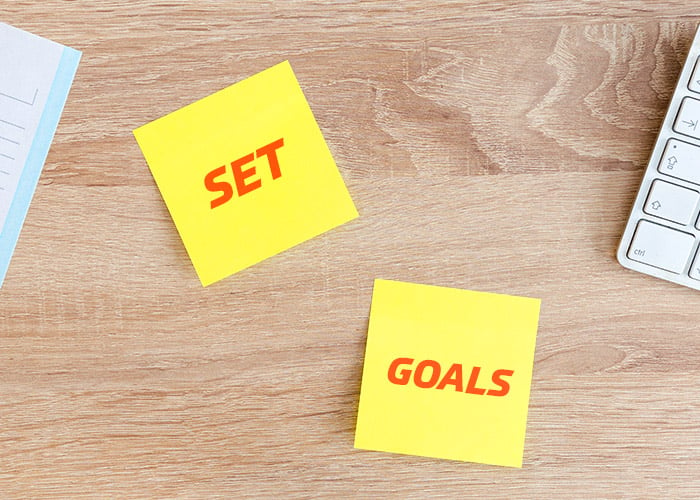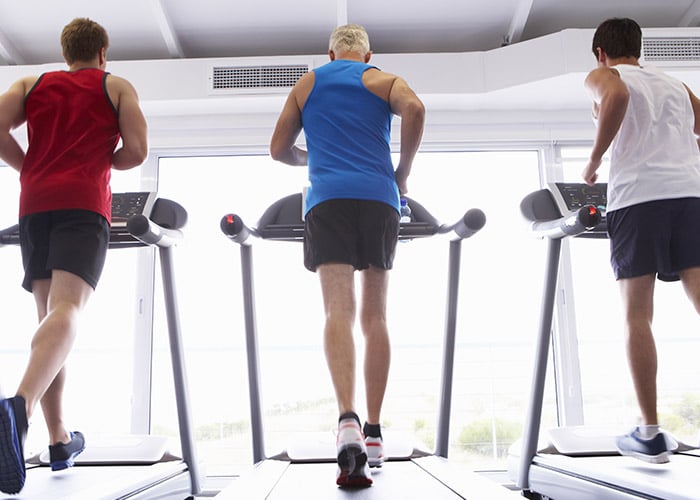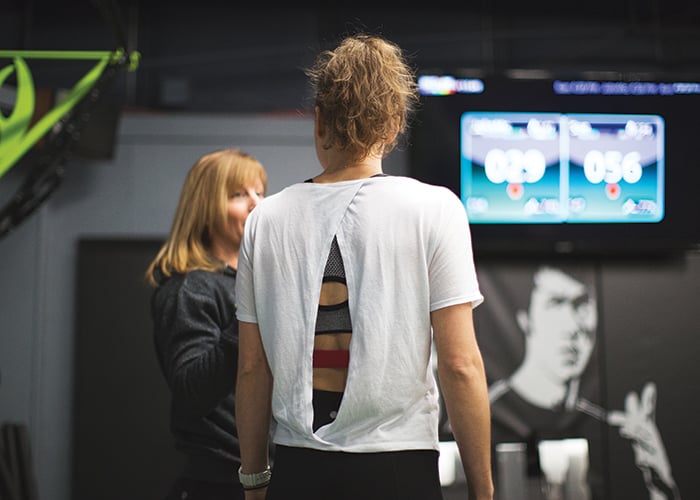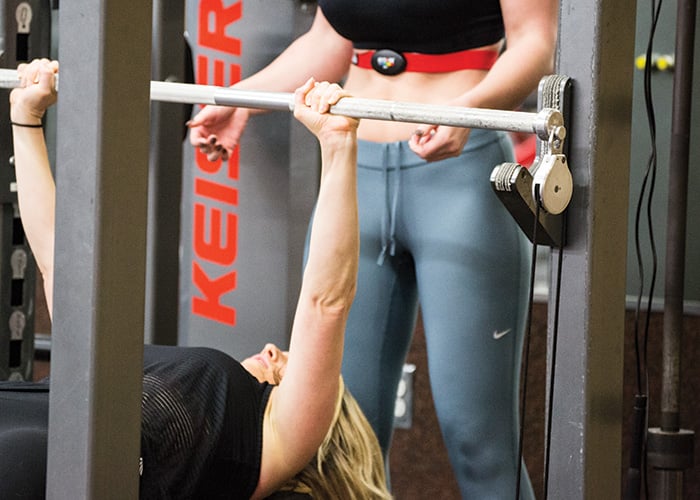3 Ways to Increase Your Exercise Motivation
It's a word we hear tossed around the fitness industry all the time—motivation. But what is it exactly? And how do we better motivate ourselves to exercise?
A textbook definition (from Lox, Ginis, and Petruzzello’s The Psychology of Exercise, 3rd Edition) says motivation is “the degree of determination, drive, or desire with which an individual approaches or avoids a behavior.”
There are many theories of motivation related to exercise behaviors. They attempt to explain the mechanisms that influence or decide our determination, drive, or desire to exercise.
Research literature provides us with many suggestions on increasing our motivation to exercise. We’ve selected three simple approaches to increasing your exercise motivation. Let’s get to it, shall we?

1. Set Goals
Goal-setting probably isn't a new concept for you. However, the process by which we set goals and pursue them is incredibly important for our motivation. As you sit down for your next goal-setting session, keep these two tips in mind.
Set Outcome and Process Goals
Outcome goals focus on the end product—the result you want to see. These types of goals are great, especially if they are specific, measureable, and time bound. Process goals are just as important. They provide us with strategies to use on our way toward achieving our outcome goal. For example, if your outcome goal is to take 7 minutes off your 10k time by March 2018, a process goal could be running a time trial 10k every other week from now until March.
Set Objective and Subjective Goals
Objective goals focus on quantitative outcomes—tangible aspects of exercise or fitness that we can measure and see. Subjective goals focus on qualitative outcomes—feelings or perceptions we want to experience in regard to exercise. Subjective goals are important because they help uncover the root “why” of our objective goals.
Research by Dr. Michelle Segar and colleagues suggests we are more consistently motivated by our subjective goals (our feelings and perceptions) than our objective goals (the desired outcome).
Try this out: set an objective goal. Then ask yourself why you want to achieve it. Ask yourself how you will feel once you achieve it. That’s your subjective goal.

2. Focus Inward: Intrinsic Motivation
One of the most prevalent theories of exercise motivation is Deci and Ryan’s Self-Determination Theory (SDT). One of the premises of SDT is that individuals are more likely to engage in a behavior, and more likely to persist in the behavior, if they're motivated from within. This is called intrinsic motivation, as compared to extrinsic motivation. A recent study published in The Physical Educator demonstrated that college-aged adults who reported higher levels of intrinsic motivation were more likely to report higher levels of physical activity.
An example of an intrinsic motive is exercising because you like the way it makes you feel—more energized, livelier. An example of an extrinsic motive is exercising because your doctor told you it was good for you or because you want to lose weight. Extrinsic motives aren't inherently bad. They can be great for getting you started in an exercise routine. But research suggests that intrinsic motives promote adherence to a behavior better than extrinsic motives.
You can explore your exercise motivation by asking yourself the following questions:
- Do I identify as an exerciser? Why or why not? The more you integrate being an exerciser into your identity, the better!
- How does exercise make me feel? What do I like about it?
- What's at the heart/root of why I exercise?
Once you’ve explored your answers to these questions, shape your internal dialogue (yes, we all talk to ourselves in our heads…all day long) to be more intrinsically focused about exercise. You can even try visualizing your next exercise session. Imagine how you'll feel during and afterward!

3. Identify Enjoyable Exercise Activities
Many people have the misconception that they need to suffer during an exercise session in order for it to be effective. Although certain types of exercise can certainly push us out of our comfort zone, we don't need to struggle through every workout. In fact, we're less likely to stick with an exercise routine if we dread starting each workout. No surprise there.
Dr. Segar and her colleagues have found across multiple populations (older adults, women, and individuals with chronic conditions) that exercise perceived as enjoyable is much more likely to lead to persistent exercise behavior and deliver health and fitness results!
When comparing short-duration, high-intensity exercise and longer-duration, moderate-intensity exercise, the research offers mixed results in terms of which type people find enjoyable and which type leads to higher rates of adherence. We suggest you try a variety of different workouts and determine what you find most enjoyable.
Here are some questions to ask yourself to get in tune with how your body likes to move:
- What mode(s) of exercise do I really enjoy? Cardio, resistance training, circuit training, yoga, etc.
- What types of workouts does my body respond best to? Which workouts leave you feeling energized even though you might feel “good sore” the next day?
- Which workouts do I look forward to starting?
Have fun as you explore different workouts! You can use the rate my workout feature on the MYZONE App to help identify which workouts you enjoy most.

Keep moving forward!
We’ll leave you with a few other strategies that may help increase your exercise motivation. Feel free to use these to supplement the three strategies we covered above.
- Identify a workout buddy or group!
- Offer yourself short and long term rewards for exercise achievements.
- Create some friendly competition through a MYZONE Challenge!
What motivates you? We’d love to hear from you. Tune in during our Fitness Friday broadcast on the MYZONE Facebook Page and share your thoughts with us!
Remember to use the hashtags #effortrewarded and #myzonemoves when you post your workout pics. And don’t forget to add your workout pics with your moves in your Activity Calendar!
For more tips on how to use the MYZONE® heart rate monitor and App, follow us during Fitness Fridays on Facebook Live (subscribe on MYZONE’s Facebook Page) – 8 am PT, 11 am ET, and check out our MYZONE® Moves Podcast on iTunes or Google Play.
Share this
You May Also Like
These Related Stories

How to Sustain Motivation Through 2017

5 Tips For High Intensity Exercise Motivation


